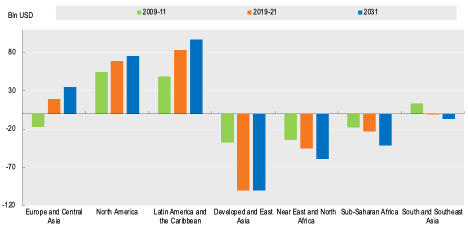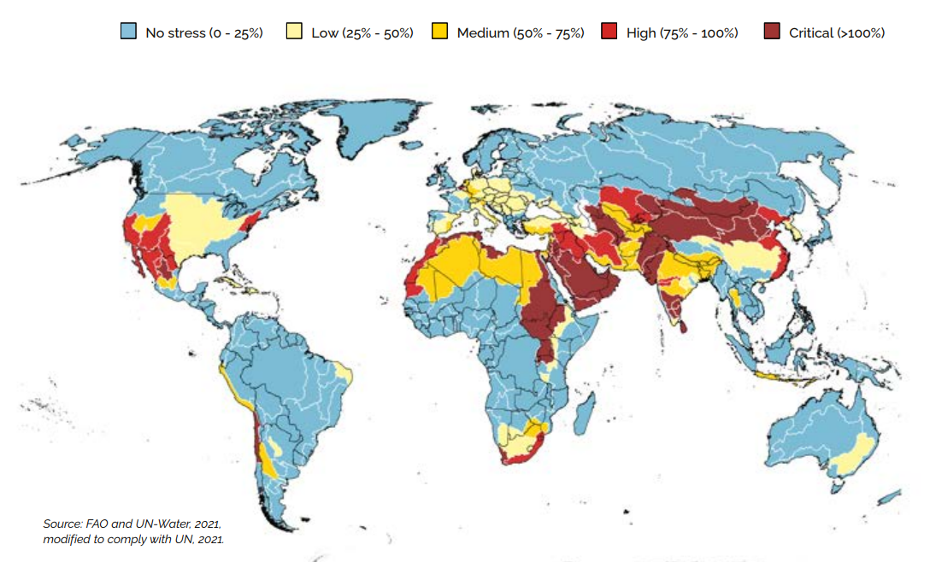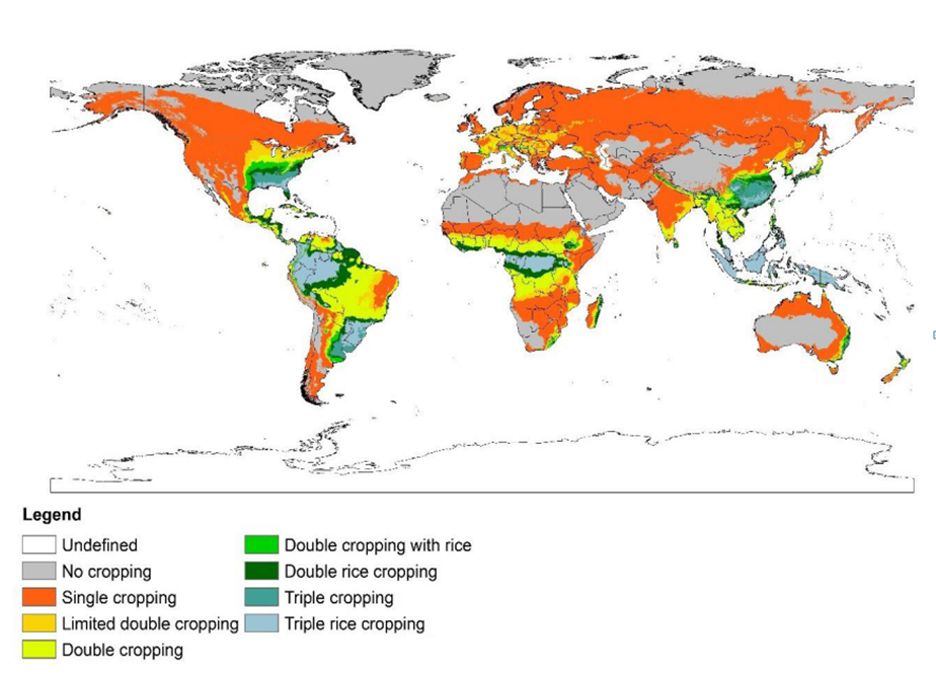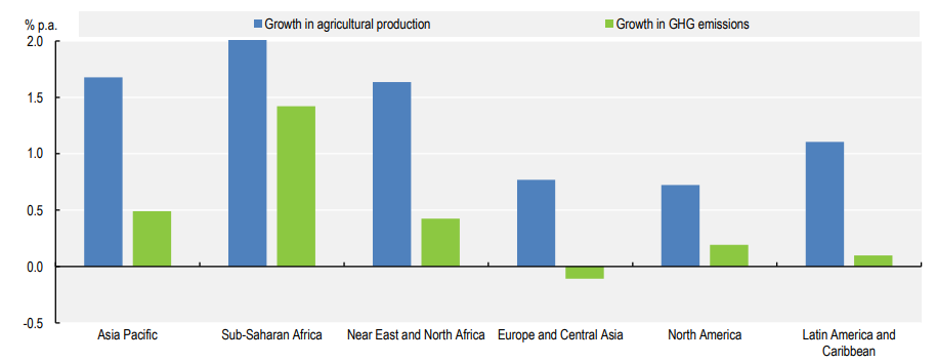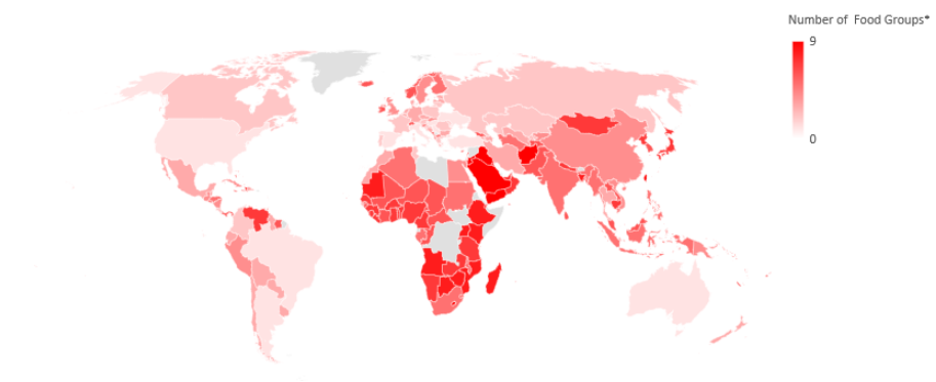Environmental Sustainability of Latin American and the Caribbean Agrifood Systems

- Americas : Latin America and the Caribbean
- Climate Change
- Value Chains
- Food Systems
- Rainfall
- Agricultural Production
- Agricultural Transformation
Related blog posts
This blog post is based on the T20 Policy Brief, "Environmental Sustainability of Food Systems, Global Food Security and Trade."
Mitigating climate change and the degradation of natural resources while increasing the production of safe and nutritious food to eradicate hunger and ensure food security for a rapidly growing population is the most important and urgent challenge facing humanity today.
Regional imbalances between food demand and supply persist, as do global disparities in the endowment of natural resources and the agroecological conditions needed for sustainable food production. These trends are also intimately linked across borders and require a globally coordinated response in order to end hunger and ensure greater environmental efficiency in food production.
It is in this linkage where some regions—including Latin America—show significant advantages over others. Thus, the most efficient response to these global challenges would be to promote a sustainable increase in food production and export from these regions.
Latin America and the Caribbean’s Agrifood System Advantages
Latin America and the Caribbean totals 36 percent of the world's net food exports and covers more than one-third of the global food deficit. Projections indicate that this share will only grow in the future.
Graph 1: Net food trade by region, in constant value
Note: Net trade (exports minus imports) of commodities covered in the Agricultural Outlook, measured in constant 2014-16 USD. Net trade figures include intraregional trade but exclude intra-EU trade.
Source: OECD/FAO (2022).
In terms of resources, Latin America and the Caribbean contains 36 percent of the world's renewable water supply but uses less than 2 percent of those resources for agriculture—well below the average global water withdrawal (greater than 7 percent) (FAO, 2021). Thus, the region experiences very low levels of water stress.
Map 1: Level of water stress of all sectors by major basin, 2018
Source: FAO, 2021.
Latin America and the Caribbean contain 28 percent of world’s land surface suitable for sustainable crop production globally (FAO, 2012).[1] In addition, a large proportion of the area suitable for multi-cropping under rain-fed production systems, both current and future, is located in this region (FAO, 2021).[2]
Map 2: Multiple cropping zone classes for rainfed agriculture for the year 2080
Source: FAO, 2021.
Along with these differentials in the endowment and use of natural resources for sustainable food production, advantages can also be found in the region’s application of sustainable agricultural practices produce that low emission rates per unit of product. While the use of conservation technologies can do a lot to improve the environmental sustainability of food systems, only some regions in the world have managed to increase productivity through the use of sustainable production systems.[3] Latin America and the Caribbean is projected as one of the most sustainable regions for food production. OECD-FAO (2022) estimates that greenhouse gas (GHG) emissions from food production will grow by an accumulated annual 0.09 percent in the region, well below the expected 0.41 percent growth of global emissions. Only Europe and Central Asia project a better performance (both with a projected decline in agricultural emissions).
In terms of efficiency, emissions in Latin America and the Caribbean are expected to grow by 0.08 percent per year for each percentage point increase in agricultural production to 2030, while Europe and Central Asia are forecast to see a reduction in emissions of 0.14 percent per year. The world’s other regions are forecast to see more than triple these emissions for each percentage point of growth in production. In Africa south of the Sahara (SSA), GHG emissions will grow by 0.7 percent for each point of increase in agricultural production.
Graph 2: Annual change in agricultural production and direct GHG emissions, 2022 to 2031
Note: This figure shows projected annual growth in direct GHG emissions from agriculture together with annual growth in the estimated net value of production of crop and livestock commodities covered in the Outlook (measured in constant USD 2014-16 prices).
Source: OECD-FAO (2022).
Undoubtedly, LAC must continue its efforts to improve the productive and environmental performance of its food systems. However, its starting point is auspicious. The region is the largest contributor, current and future, to the global food deficit, and this contribution is made with less environmental impact and resource use than in other regions of the world.
International trade: the instrument to achieve greater efficiency
Today, more than 20 percent of the calories consumed globally come from trade, it is foreseeable that the relevance trade for food security will continue to increase. Many countries are seeing their food demand balloon not only to ensure adequate calories but also to achieve more diversified diets (FAO, 2018).
Map 3: Number of food groups with insufficient local production adjusted by food loss and waste
Source: Laborde et al. (2022).
At the same time, given the growing regional imbalances in natural resource endowments for sustainable food production, trade can also improve global environmental indicators. Trade is particularly important for resource-constrained countries, which are highly dependent on food imports. Such imports are not only critical to address food security issues but also help reduce overexploitation and degradation of resources, particularly soil and water.
However, food trade has faced restrictions in recent years. These restrictions, often not evidence-based, have come in response to crises like the COVID-19 pandemic. In addition, the situation in Ukraine has also generated greater pressure on global food markets, and some exporting countries have begun to apply export restrictions as a result.[4]
New border barriers are also being increasingly instituted, also without solid scientific foundation, in an attempt to address environmental issues. The imposition of unilateral environmental standards at the border, with limited visions of sustainability, has put pressure on national agri-food systems and jeopardized global food security.
The role of international governance
As discussed previously, Latin America and the Caribbean, as well as other regions of the world, have the capacity to increase food production with fewer emissions per unit of a product. Therefore, restricting trade from these regions poses a major threat to both global food security and climate change mitigation.
While some countries and blocs are advancing rapidly with their own laudable initiatives to increase sustainable food production and strengthen trade, these initiatives often contain only partial visions and respond only to national interests, undermining global needs. It is therefore the responsibility of policymakers to design these initiatives carefully, ensure they are based on science, and attempt to balance the objectives of GHG mitigation, global food security, and farmers' livelihoods (OECD, 2021).
Such initiatives should also be designed from the global lens. There currently exists no global forum with the express purpose of discussing agricultural and food production sustainability with a holistic view of its impact on the environment, ecosystems, and natural resource use (Lamy et al, 2022). Environmental issues, the promotion of sustainable food systems, and global food security have not been considered seriously enough in international trade negotiations within WTO. Some effort in this regard was made during the 2021 UN Food Systems Summit, but it was insufficient and not sufficiently inclusive of all participants in the global food systems value chain. Thus, the need for a collaborative and balanced response to the joint challenges of global food security and climate change is increasingly urgent.
[1]Understood as land with high agro-ecological potential that is not forested or protected and has a population density of less than 25 per hectare.
[2]In areas where the growing periods are sufficiently long to allow more than one crop to grow during the same year or season, single crop yields do not reflect the full potential of total time and space available per unit area of land for rain-fed production.
[3]For example, less than 10 percent of total world crop production is under the “no-till management strategy,” and only five countries (United States, Brazil, Argentina, Canada, and Australia) account for 92 percent of the total (FAO, 2011).
[4]See Laborde and Mamun, 2022 and IFPRI’s live tracker. https://www.ifpri.org/project/covid-19-food-trade-policy-tracker
References
Anh Hoang, T., Nachtergaele, F., Chiozza, F. and Ziadat, F. 2022. Land suitability for crop production in the future: SOLAW21 Technical background report. Rome, FAO. https://doi.org/10.4060/cc0878en
Elverdin, P.; Glauber, J.; Laborde, D. and Piñeiro, V. 2022. Can trade contribute to a global environmental sustainability? IFPRI Project Note March 2022. Washington, DC: International Food Policy Research Institute (IFPRI). https://doi.org/10.2499/p15738coll2.135830
Elverdin, P.; Maranatha, B.; Glauber, J.; Illescas, N.; Sumardjo, G.; Laborde, D.; Piñeiro, V.; Piñeiro, M.; Setia, M.; Rosdaniah, S. y Tejeda Rodriguez, A. 2022. Environmental sustainability of food systems, global food security and trade. Policy brief, Task Force 4, T20 Indonesia 2022.
FAO. 2011. The state of the world's land and water resources for food and agriculture [SOLAW]. Rome.
FAO. 2018. Trade and Nutrition Technical Note.https://www.fao.org/3/i4922e/i4922e.pdf
FAO. 2021.The State of the World’s Land and Water Resources for Food and Agriculture – Systems at breaking point. Synthesis report 2021. Rome.
Laborde, D.; Piñeiro, V. and Swinnen, J. 2022. Tomorrow’s agri-food system: The connections between trade, food security, and nutrition for a sustainable diet. In Routledge Handbook of Sustainable Diets, Kevany, K. and Properi, P., eds. ISBN 9781032004860
Lamy, P.; Geneviève, P.; Garzon, I. and Hub, S. 2022. GRAPE 2: A narrow path for EU agri-food mirror measures?. Europe JaquesDelors, April 2022.
OECD-FAO. 2022. OECD-FAO Agricultural Outlook 2022-2031, OECD Publishing, Paris.

